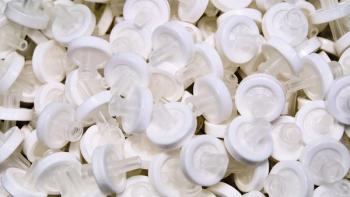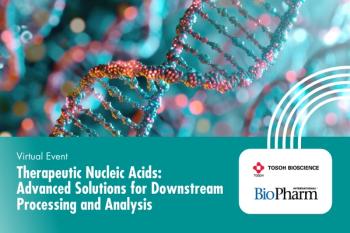
- BioPharm International-06-01-2010
- Volume 23
- Issue 6
Will Protein A Be the Long-Term Solution for Your Purification Needs?
Biomanufacturers and vendors are now exploring more cost-effective purification technologies.
Most people in the biopharmaceutical industry would agree that downstream processing (DSP) is a bottleneck. Primary reasons include the expense involved in chromatography processes and resins, and cleaning and validating columns. Protein A cost is a big factor, but the process works, so even though biomanufacturers are concerned about costs, until recently, few were actually ready to switch to an alternative.
Eric S. Langer
With all the concerns about DSP (this year 42% of respondents to BioPlan Associates' 7th Annual Report and Survey of Biopharmaceutical Manufacturing Capacity and Production recognize that DSP will be the cause of ongoing capacity bottlenecks for at least the next five years), you would expect biomanufacturers to be exploring their options, and vendors to be working overtime to create solutions. We wanted to get a "street-level," vendors', and end-users' perspective on how long Protein A would be a part of our manufacturing vocabulary. So we went to this year's BIO International Convention in Chicago and tracked down a number of vendors, reps, and end-users willing to prognosticate on how Protein A will fare five years out. This column presents what we found.
In the near term, Protein A will continue to be the most used purification approach for monoclonal antibodies (MAbs) simply because it's so effective. Over the next five years, Protein A will continue to be a staple in the purification processes, until a more cost-effective technology with similar (or better) purification capability is discovered. Beyond five years, it's likely that the vendors and laboratories now working on better purification approaches will find an alternative. After the industry adopts the first new technology and it is implemented in clinical-scale production, the rate of adoption will accelerate, and more alternatives will be introduced. However, it's the industry's opinion that it's unlikely we will move entirely away from Protein A, because it works so well. Some of the comments we heard are listed below.
- From a "street-level" view, Randall Tedder, an account manager with over 25 years selling purification products at Asahi Kasei Bioprocess (TechniKrom, Glenview, IL) said, "With so many vendors working on technical advances to find ways around Protein A, I'll be very surprised if alternatives are not in place within five years." However, it'll be a slow process, because Protein A is effective, and it's so well documented, he added.
- The speed at which Protein A is "retired" will likely pick up after the first therapeutic MAbs are approved using alternatives. This is probably going to be a linear progression with the Protein A bubble not popping, but just losing pressure as the first approvals occur. According to Michael LaBreck, sales manager at Novasep, Inc. (Boothwyn, PA), "This may be five years out, and the conversion will not be fast." LaBreck said that there will need to be benefits beyond basic lower costs of alternatives and benefits may be the result of better space utilization because of reduction in size of buffer tanks—if you can reduce buffer tanks by 60% in DSP, that's a big deal. "Improvements might also come from purification for high-titer products, or from clinical improvements," he added.
- Tracy Thompson, CEO of PolyBatics, (Palmerstown, North NZ) is developing a single-use replacement for Protein A Sepharose in MAb purification (natively folded proteins are displayed on the surface covalently bound to polyester beads). This results in projected costs that are magnitudes of order less than current affinity media. Thompson sees the fate of Protein A as a matter of time, "Once a new technology is approved for a product in clinical trials, the rate of adoption for other new technologies will accelerate." In five years, single-use chromatography media will be the norm for all new submissions, he said, and although Protein A won't be leaving the market any time soon, more flexible, less costly media, will make it impractical, at least at the current cost levels.
The decision to move away from Protein A is complex, and more factors are likely to appear over the next few years. For example, the recent move toward parvo virus, small pore virus filtration, is presenting us with another expensive raw material. This adds downstream insult to injury, because some large biomanufacturers report that the new parvo virus filters may end up being even more expensive than Protein A (depending on the number of filters used versus the number of cycles validated for Protein A).
Of course, implementation of parvo filtration is still in the early stages. How rapidly parvo virus filters are implemented is not clear, but these smaller pore size filters mean higher filter areas, and single-use filter costs can add up fast. So the connection between these filters and Protein A is cost—both are expensive. With more costs being lumped into downstream processing, budget conscious operators will be looking even harder to cut costs in either Protein A, or parvo filters, or both.
WESTERN EUROPEANS GETTING OUT OF PROTEIN A FIRST
In our 7th Annual Report, one of the problems we continue to explore is how respondents are planning to move away from Protein A, and if so, at what stages of manufacturing. This year, it turns out that globally, over 53% are considering alternatives to Protein A to reduce costs in new production projects. However, only 8% will actually be moving away from Protein A for existing production projects over the next 12 months (Figure 1).
Figure 1. Switching from Protein A usage: US versus Western Europe
Interestingly, though, a much higher proportion of Western European respondents indicated that they are considering alternatives to Protein A. Nearly 77% of Western European biomanufacturers are considering Protein A alternatives to reduce costs. So it appears that Western European facilities may be more ready to switch when the price of alternatives to Protein A are low enough to make switching feasible.
To summarize, chromatography purification steps are having a significant impact on overall capacity today, (with 19% of biomanufacturing facilities considering this step to be a 'significant' or 'severe' bottleneck). Protein A is right there in the middle. But even as options develop and alternatives are approved, because Protein A works, it will likely still be the workhorse in the downstream process for the foreseeable future. In fact, over the next 24 months, 15% of biomanufacturers simply are planning on outsourcing their downstream process operations. But that will be the topic of a future column.
CORRECTION
The April column incorrectly indicated that ADSEPT (ADvanced SEParation Technology) was made by Nysa Membrane Technologies. The company's current name is Natrix Separations Inc.
Eric Langer is president and managing partner at BioPlan Associates, Inc., Rockville, MD. He is also a member of BioPharm International's editorial advisory board 301.921.5979,
Articles in this issue
over 15 years ago
BioPharm International, June 2010 Issue (PDF)over 15 years ago
Manufacturers, FDA Seek to Secure Supply Chainsover 15 years ago
The Effect of Thermal Cycling on Clamp-Type Fittingsover 15 years ago
Five Things Every Biotech Company Must Know About Biosimilarsover 15 years ago
The New NormalNewsletter
Stay at the forefront of biopharmaceutical innovation—subscribe to BioPharm International for expert insights on drug development, manufacturing, compliance, and more.





